
Hydroxyurea Fertility Impact Calculator
This calculator estimates the potential impact of hydroxyurea treatment on sperm count based on treatment duration. The tool is based on clinical studies showing dose-dependent effects. Individual results may vary significantly based on factors like age, overall health, and other medications.
Estimated Sperm Count Impact
0%Important Note: Based on a 2022 multicenter study of 84 males with sickle cell disease. Individual results may vary significantly. Consult your healthcare provider for personalized assessment.
When a doctor prescribes Hydroxyurea is a chemotherapy‑like medication used for conditions such as sickle cell disease and certain blood cancers. Many patients wonder how this drug might affect their ability to have children later on. The good news is that the research is clearer now, and you can take concrete steps to protect your reproductive health while staying on treatment.
What Is Hydroxyurea?
Hydroxyurea is an oral ribonucleotide reductase inhibitor that reduces the production of abnormal red blood cells. It was first approved in the 1960s for certain leukemias and, more recently, became a cornerstone therapy for Sickle Cell Disease. By increasing fetal hemoglobin levels, it lessens painful crises and organ damage. The drug is also used in Myeloproliferative neoplasms to control blood counts.
How Hydroxyurea Works
The molecule blocks an enzyme needed for DNA synthesis, which slows down rapidly dividing cells. This is why it can curb the overproduction of abnormal blood cells. Unfortunately, the same mechanism can also impact cells that are essential for reproduction-especially the sperm‑producing cells in the testes and the developing egg cells in the ovaries.
Why Fertility Concerns Matter
Fertility isn’t just a future‑planning topic; it influences medication adherence, mental well‑being, and overall quality of life. Knowing the risks lets you and your healthcare team weigh benefits against potential reproductive side effects and decide on protective measures early.
Male Fertility: What the Data Show
Studies on men taking hydroxyurea fertility have reported a dose‑dependent drop in Sperm count. A 2022 multicenter study of 84 males with sickle cell disease found a median reduction of 45% after six months of therapy, with 12% experiencing oligospermia (<5 million sperm/mL). Motility and morphology also suffered, though many men recovered normal parameters after a drug‑free interval of three to six months.
- Typical onset of measurable decline: 3-6 months on therapy.
- Partial recovery observed in 70% of cases after a 3‑month break.
- Persistent azoospermia is rare (<2% of patients).
These findings suggest that regular monitoring of semen quality is prudent, especially for men who plan to father children within the next few years.
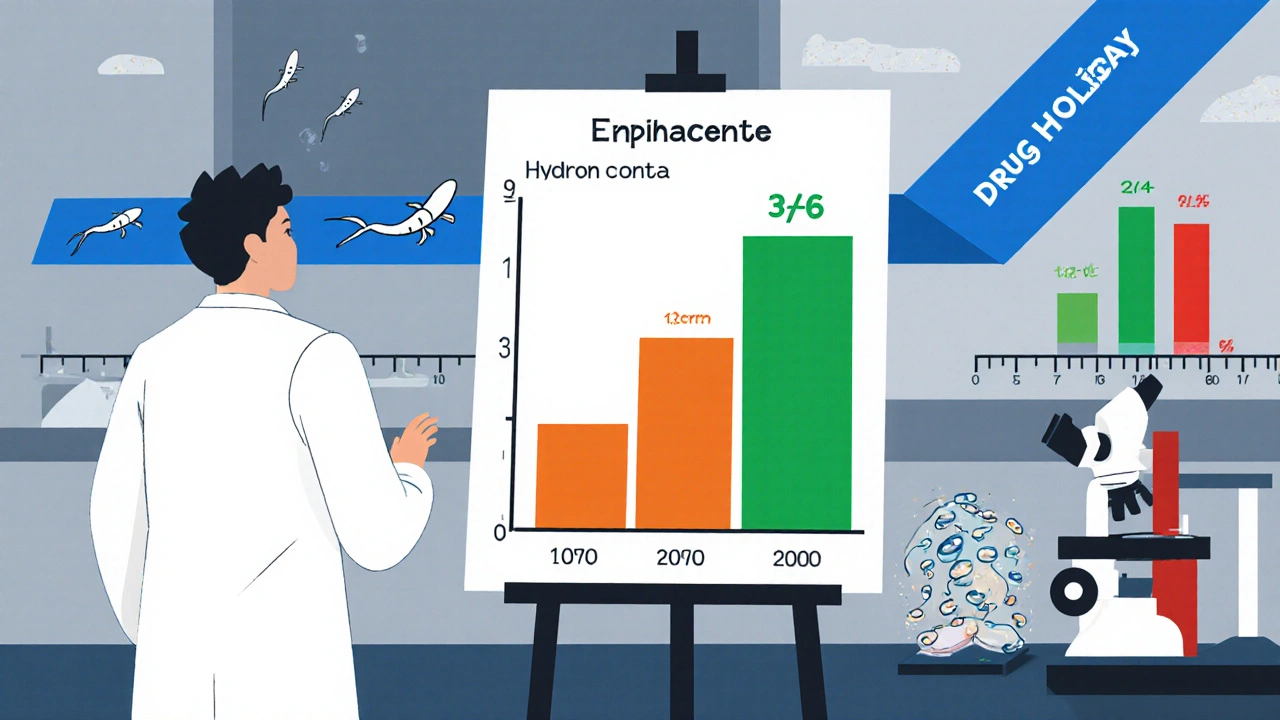
Female Fertility: What the Evidence Says
Women on hydroxyurea also face potential reproductive risks, primarily through a decline in Ovarian reserve. Anti‑Müllerian hormone (AMH) levels-a reliable marker of egg quantity-have been shown to drop by an average of 20% after one year of continuous use. Menstrual irregularities, such as oligomenorrhea, are reported in up to 15% of patients.
Importantly, most of the data come from small cohort studies (e.g., a 2021 French registry of 57 women). While a few cases of premature ovarian insufficiency have been documented, the majority of women regain normal hormonal profiles after stopping the drug for six months.
- AMH decline tends to be modest but measurable after 12 months.
- Reversibility is common after a drug holiday of 6-12 months.
- Pregnancy outcomes while on hydroxyurea are generally favorable when the drug is discontinued before conception.
Guidelines & Counseling: What Your Doctor Should Do
The American Society of Clinical Oncology (ASCO) recommends discussing fertility before starting any potentially gonadotoxic therapy. For hydroxyurea, this means:
- Baseline evaluation of semen analysis for men and AMH/FSH for women.
- Review of family‑planning timeline.
- Consideration of fertility‑preservation options if future pregnancy is likely.
- Periodic re‑assessment (every 6-12 months) while on therapy.
Open communication lets you make informed choices without compromising disease control.
Fertility‑Preservation Options
When the risk is significant, several proven strategies can safeguard future parenthood:
| Method | Who Can Use It | Success Rate (Live Birth) | Typical Cost (USD) |
|---|---|---|---|
| Sperm Cryopreservation | Men, post‑pubertal | 70‑80 % (when used promptly) | $200-$500 per sample |
| Egg Freezing (Vitrification) | Women, <35 years | 55‑65 % (if fresh eggs are used) | $10,000-$15,000 per cycle |
| Embryo Cryopreservation | Women with partner or donor sperm | 60‑70 % (with IVF) | $12,000-$20,000 per cycle |
| Ovarian Tissue Freezing | Pre‑pubertal girls or women unable to undergo stimulation | 30‑40 % (still experimental) | $8,000-$12,000 |
All of these methods fall under the broader umbrella of Gamete preservation. The choice depends on age, relationship status, and personal preferences.
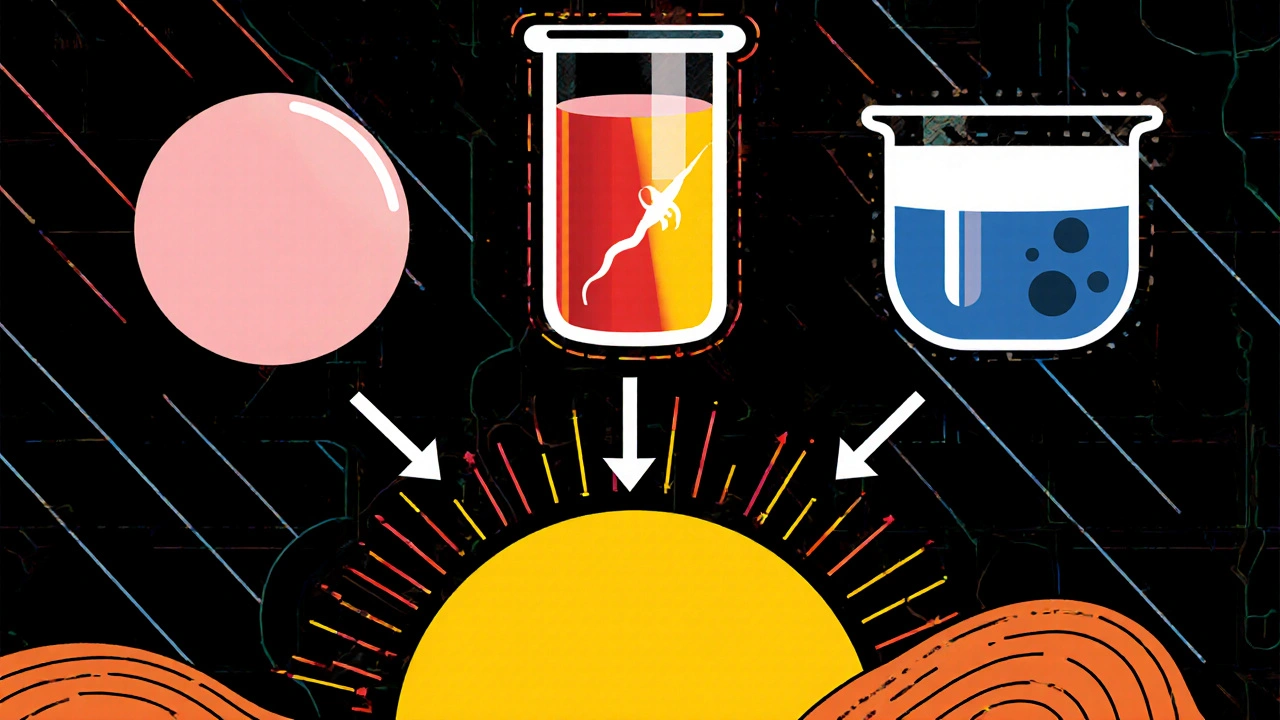
Managing Risks While Staying on Hydroxyurea
If stopping the drug isn’t an option, you can still lower fertility risks:
- Low‑dose regimens: Some clinicians adjust the dose to the lowest effective level, which may lessen gonadal impact.
- Scheduled drug holidays: A brief interruption (2-4 weeks) before attempting conception can improve sperm parameters and ovarian hormone levels.
- Adjunctive therapies: Hormonal support, such as GnRH analogues, has been studied in small trials to protect ovarian function, though evidence is still emerging.
Always coordinate any dose changes with your hematologist or oncologist-disease control remains the top priority.
Quick Takeaways
- Hydroxyurea can lower sperm count and ovarian reserve, but effects are often reversible after a drug‑free period.
- Baseline and periodic fertility testing are recommended for all patients of reproductive age.
- Consider sperm banking, egg freezing, or embryo freezing before starting long‑term therapy.
- Low‑dose strategies and short drug holidays can mitigate risk without sacrificing disease control.
- Open dialogue with your care team is essential for personalized planning.
Frequently Asked Questions
Can I get pregnant while taking hydroxyurea?
Pregnancy is discouraged during active hydroxyurea therapy because the drug can cross the placenta and affect the fetus. Most physicians advise stopping the medication at least three months before trying to conceive and confirming normal blood counts before attempting pregnancy.
How long does it take for sperm quality to recover after stopping hydroxyurea?
Recovery typically begins within 2-3 months, with most men reaching baseline levels by six months. A semen analysis after a three‑month break can help gauge progress.
Is egg freezing effective for women on hydroxyurea?
Yes. Egg vitrification before starting hydroxyurea offers a high chance of future live birth, especially when performed before age 35. The process does not interact with the drug, so timing can be coordinated with disease management.
Do hormonal therapies protect my ovaries while I’m on hydroxyurea?
Some small studies suggest GnRH analogues may reduce ovarian damage, but the evidence is not yet definitive. Discuss this option with a reproductive endocrinologist to weigh benefits and costs.
What tests should I ask for before starting hydroxyurea?
Men should request a baseline semen analysis; women should have AMH, FSH, and a pelvic ultrasound to assess ovarian reserve. These numbers give a reference point for future monitoring.

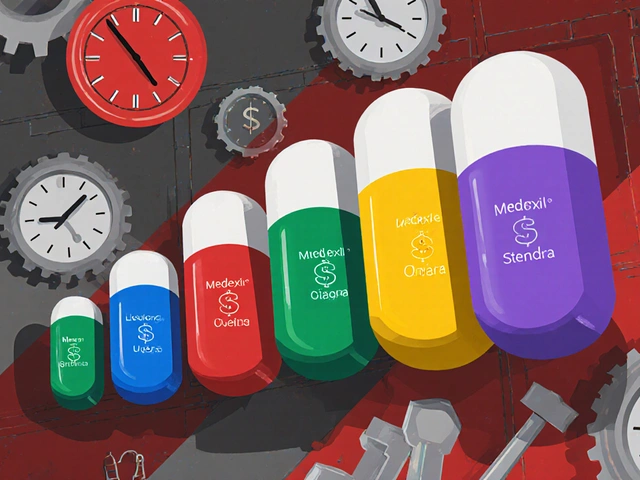




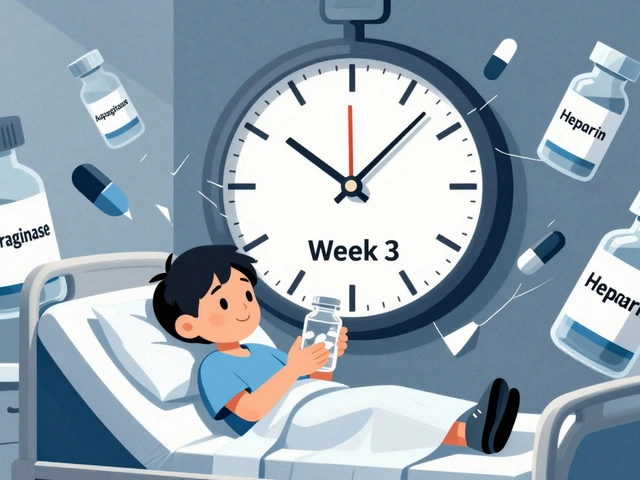

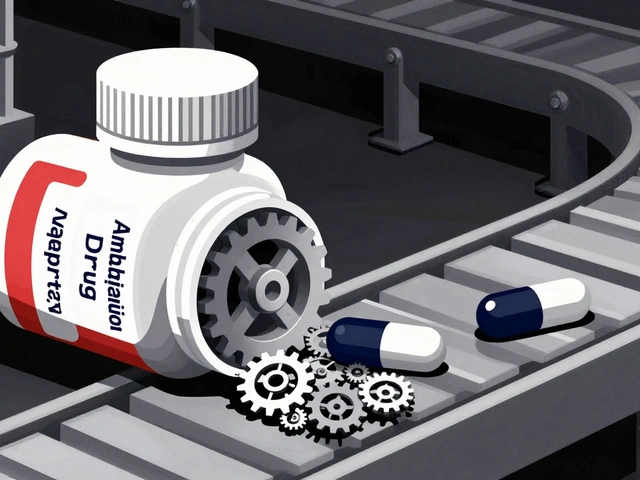
11 Comments
It's infuriating how the medical community always paints Hydroxyurea as a miracle drug while brushing aside the devastating impact it can have on a person's chance to start a family. The data clearly show a dose‑dependent plunge in sperm count, yet patients are handed prescriptions without a real discussion of fertility preservation. I refuse to sit quietly while this narrative continues, and anyone considering this treatment deserves a blunt warning.
Ah, the *glorious* saga of Hydroxyurea – a veritable cocktail of chemic alchemy that “saves lives” yet slyly nibbles away at your reproductive engine. Let’s not forget the 2022 multicenter saga that revealed a 45% slump in sperm after six moons of dosing – a statistic that reads like a tragedy in a Shakespearean play. O' you who dare trust the pharmacopeia, strap on a sperm freezer before you dive into this potion, lest thou be left with naught but a lamentable whisper of a legacy.
Hydroxyurea may calm sickle‑cell crises, but it also whispers quietly to the testes, dimming the production line. That silent erosion of fertility is a shadow most patients don’t even see coming.
Think of the drug as a double‑edged sword – it lowers painful sickle attacks but it can also cut down the seed makers in men. Some of the research has typos but the trend is clear. If you plan a family, ask your doc about sperm banking early on.
Yo, don’t let the fear freeze you out! You can stay on Hydroxyurea and still protect your future kiddos – get a sperm analysis, consider a freeze, and keep that optimism blazing. This isn’t a dead end; it’s just a detour with a solid backup plan.
They don’t tell you that the pharma giants have a secret pact to hide the true fertility fallout of Hydroxyurea. While you’re busy counting pain‑free days, they’re quietly erasing your lineage. Wake up, question the silent agenda, and secure your reproductive rights before it’s too late.
In short, discuss sperm banking with your physician before commencing therapy.
Oh, the grand conspiracy theory thrives on a single sentence, does it? Let’s stick to the peer‑reviewed studies that actually quantify the sperm count drop rather than weaving dramatic plots.
Great point about staying optimistic while planning ahead – remember to keep the conversation open with your healthcare team and consider all options available.
Hydroxyurea, first introduced in the 1960s, has become a cornerstone in the management of sickle cell disease and certain myeloproliferative disorders, offering patients a reduction in painful crises and an improved quality of life. However, the mechanism by which it inhibits ribonucleotide reductase also means it interferes with rapidly dividing cells, a category that includes both sperm-producing germ cells and maturing oocytes. Multiple studies now converge on the observation that men on long‑term Hydroxyurea experience a measurable decline in sperm concentration, with some reporting reductions as steep as forty‑five percent after six months of therapy. This decline is often dose‑dependent, suggesting that higher cumulative exposure exacerbates the impact on spermatogenesis. Importantly, the effect appears at least partially reversible; several small cohorts have shown a gradual rebound in sperm counts after discontinuation of the drug or after a drug holiday of several months. Nonetheless, the recovery timeline can be unpredictable, and some patients may not achieve their pre‑treatment baseline, especially those with pre‑existing marginal fertility parameters. For women, the data are less abundant, but animal models and limited human observations indicate potential risks to ovarian reserve and follicular development, underscoring the need for vigilance across sexes. Fertility preservation strategies, such as sperm cryopreservation for men and egg or embryo freezing for women, should be discussed proactively before initiating Hydroxyurea, ideally as part of a shared decision‑making process. Moreover, regular monitoring of semen analysis and hormonal panels can help clinicians detect early declines and adjust treatment plans accordingly. In clinical practice, some physicians consider dose reduction, intermittent dosing schedules, or even alternative therapies when reproductive goals become a priority for the patient. The psychological burden of facing possible infertility can also affect adherence to treatment, making open communication essential to sustain both physical and mental health. Advocacy groups have begun to push for clearer labeling of fertility risks on medication guides, a step that could empower patients to make more informed choices. While Hydroxyurea remains a life‑saving medication for many, its impact on reproductive health should be treated with the same seriousness as its hematologic benefits. Ultimately, a multidisciplinary approach involving hematologists, reproductive endocrinologists, and counselors offers the best pathway to balance disease control with future family planning aspirations. Keeping abreast of the latest research, which is steadily illuminating the nuances of Hydroxyurea’s reproductive effects, will ensure that patients and providers alike navigate this complex terrain with confidence.
This comprehensive overview really clarifies the trade‑offs; I appreciate the balanced tone and the emphasis on proactive fertility planning alongside disease management.